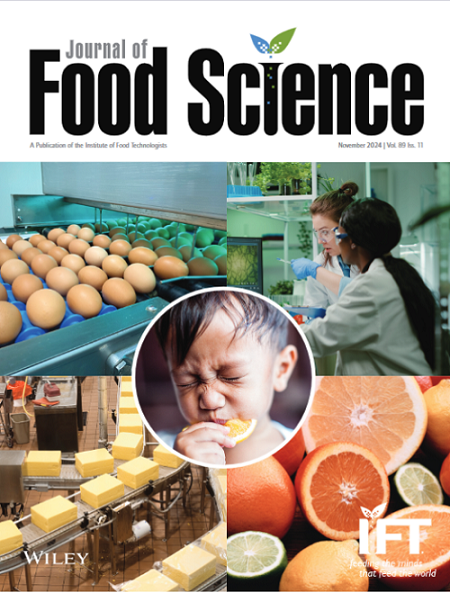Impact of immobilized pectinase-alginate beads on physicochemical properties, antioxidant activity, and reusability in papaya juice processing
Abstract
Papaya fruit, which has a medium level of pectin content, faces critical challenges in the production of papaya juice, leading to an undesirable, highly viscous texture. Conventional reliance on the use of free pectinase enzymes has addressed this issue; however, their single-use nature has limited their efficiency and has subsequently brought about an increase in processing costs. Hence, immobilized pectinase-alginate (IPA) beads with calcium chloride were developed, and the effects of their reusability on the physicochemical and antioxidant characteristics of papaya juice were analyzed. Immobilization of pectinase enzyme with sodium alginate (2%–4%) and calcium chloride (0.1–0.3 M) resulted in an immobilization yield ranging from 93.06% to 95.82%. It was found that the IPA beads maintained more than 80% relative activity even after seven subsequent cycles while demonstrating storage stability with more than 88% residual activity for up to 35 days, proving their efficiency and sustainability. In the first cycle, treatment with IPA beads significantly reduced the pectin content (51.61 mg GalAE/100 mL) and viscosity (1.15 mPa.s) of papaya juice compared to the control, which exhibited higher values of 235.00 mg GalAE/100 mL and 2.46 mPa.s, respectively. Both immobilized and free enzymes exhibit comparable results, outperforming the control, but IPA benefits by improving process efficiency through enzyme reusability. In addition, IPA could significantly maintain papaya juice's antioxidant activity over four treatment cycles. Future research is needed to focus on industrial scaling, shelf life of the IPA beads, and consumer acceptance of the papaya juice treated with immobilized enzyme.
Practical Application
Papaya juice processing is challenging due to its moderate pectin content, which contributes to high viscosity, reduced yield, and increased turbidity, affecting overall juice quality. The conventional application of free pectinase in juice processing introduces further complications related to enzyme stability, cost, and recovery for reuse. Immobilizing pectinase minimizes waste via enzyme reuse, decreases juice viscosity, enhances clarity, and maintains antioxidant properties, thereby promoting process sustainability and meeting consumer preferences. The technology can be scaled and applied to a wide range of fruit juice processing industries, improving efficiency and nutritional value.

 求助内容:
求助内容: 应助结果提醒方式:
应助结果提醒方式:


